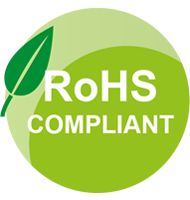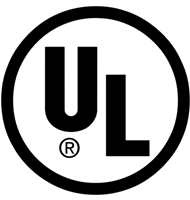-
 206-310-3624
206-310-3624
-
 support@pcbinternational.com
support@pcbinternational.com
High frequency PCBs and RF PCBs often need high performance with low signal losses, low electrical noise, or high board temperatures. To meet these requirements, Rogers Corporation PCB materials are often used as they are cost effective versus many of the alternatives that are available.
Rogers series is often used in RF PCBs with frequencies 6+ GHz and in high heat applications that need ceramic laminates and low signal losses. It may also be used to minimize electrical noise to meet stringent performance requirements.
RO4000 Series materials are high frequency circuit boards with glass reinforced hydrocarbon and ceramic laminates. Rogers PCBs may consist of both cores and prepreg materials but more often than not, it is a core that carries the top 2 layers of copper with the rest being standard FR4 to reduce cost unless there is an overall very high temperature requirement. Standard FR4 boards have a Tg of 135C to 180C while Rogers 4350B and 4003C has a Tg >= 280C.
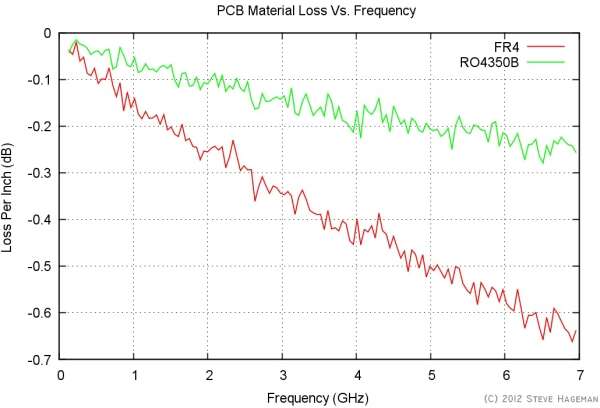
Shown above, the Rogers materials have much less signal loss due to the PCB materials absorbing the signal vs. FR4. This is also called PCB material loss. At about 6 to 7 GHz the signal loss is typically about 0.5 dB more in FR4 but this is design and signal length dependent
Rogers RO4003C vs. RO4350B? The main difference is the 4350 has a flammability rating. Electrical Properties are similar as seen below.
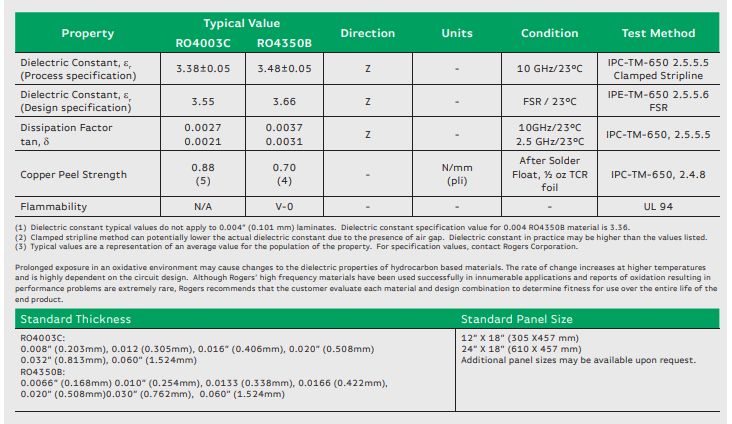
Source: rogerscorp.com/documents/887/acs/RO4003C-and-RO4350B-Laminates-with-TICER-Foil.pdf
Rogers PCB layers may be combined with FR4 layers to achieve improved performance to minimum cost vs. all layers being Rogers materials. When this is done, the signals need to be put on a Rogers PCB core and not on prepreg.
A typical FR4 6-layer stackup is shown below. Note the prepreg is on the outside to minimize cost as prepreg is lower cost than cores. This is often called a "foil build".
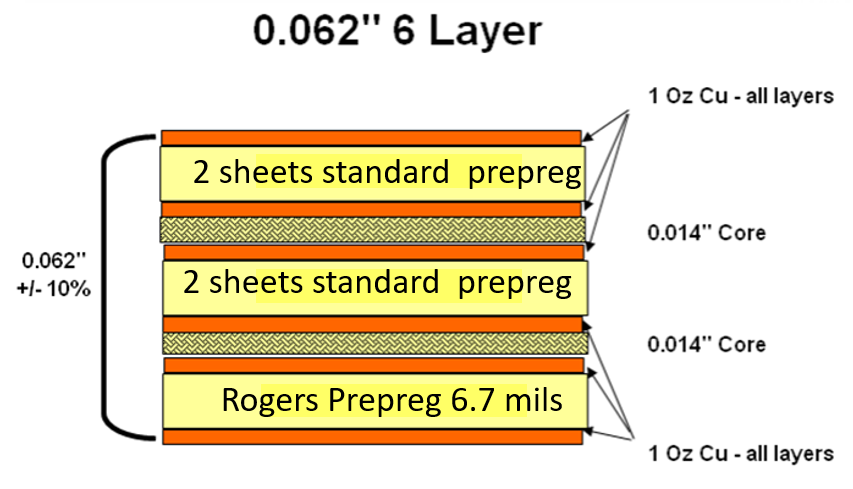
However when a Rogers layer is needed the core is on the layers that need it and that is usually the outside layers. See the 6-layer example below with 3 cores rather than 2 as shown above. This configuration is sometimes called a "Cap Construction" board or a "core build".
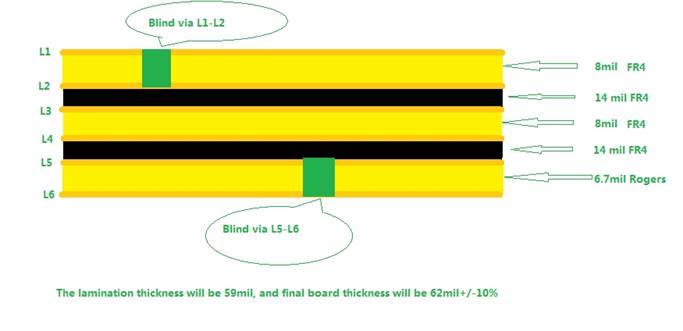
Rogers 4350 and 4003 in stock. We also carry other low-loss materials such as ARLON, Polyflon and Taconic. We have our staff of fab engineers to help suggest the optimal ways of using Rogers to achieve your goals.
For more information on when to use FR4 vs. Rogers see the articles below.
What-PCB-material-do-I-need-to-use-for-RF
Rogers Data Sheets & Literature
Understanding-When-To-Use-FR-4-Or-High-Frequency-Laminates
If you have any questions, please contact us; we will be glad to assist you!

